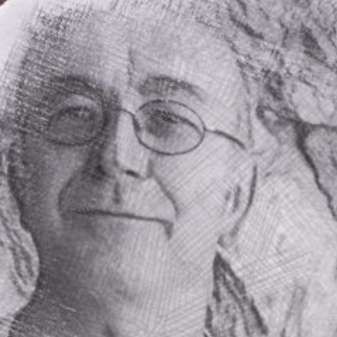“Cinderella” and “ballet” might ordinarily suggest glockenspiel-topped delicacy; not in Prokofiev’s case. His ballet Cinderella, and the selection from it chosen by the RSNO, contains great variety. The Introduction’s darkness hints at the exploitation and neglect which are to be vanquished by love and happiness. Prokofiev’s stated aim to write a ballet which was “as danceable as possible” did not rule out the burlesque. “Cinderella goes to the ball”, having begun in quite a restrained manner, eventually features a zany, wide-ranging theme, whose relationship to its harmonies is at best tangential.
This 1944 ballet is a great showpiece for individual players and orchestra alike. The services of the excellent John Cushing, prinicpal clarinet, were called upon repeatedly. The comical “Pas de chat” allowed the RSNO to shine, especially the percussion section (and particularly snare drum) who add a final flare to the rattling finish. The selection made for a great opener and I really can’t think why this work is so much less well known than Prokofiev’s Romeo and Juliet.
Saleem Abboud Ashkar joined a pared-down orchestra in Mozart’s Piano Concerto no. 23 in A major. Tall and slim, he resembled a modern-day Liszt, minus the histrionics. Ashkar sat calmly, hands in lap, as the orchestra completed its exposition of the concerto’s beloved opening themes. His entry to the work was as calm as his demeanour; clarity, balance and phrasing were just right.
There is really not a trace of the rapidity with which this work was written in Mozart’s crazily busy year of 1786. The exchanges between the soloist and the woodwind in the first movement are exquisitely composed. This was turning into a quite a night for RSNO woodwind. I found the cadenza at the close of this movement magical. Coming towards the end of a movement which has been calmly cheerful, the cadenza takes a sudden swerve into the minor and, for a moment, we seem to have lost our way. How could this have happened so near to home? The drama here was poignant and Ashkar’s touch was just right, endowing the ending with a sense of joyous relief.
In contrast to the first movement, the soloist opens the second. An Adagio rather then the usual Andante, its lyrical and introspective nature points to Beethoven’s profound slow movements. There was one lovely moment where the left hand of the soloist’s part enters into an exchange with a bassoon, and principal bassoon David Hubbard played beautifully here. Ashkar walked the fine line between wistfulness and sentimentality with great balance.
The closing Allegro assai was just that. By this point I was beginning to wonder whether Mozart had a bassoon-playing friend at the première, as there appeared yet more great writing for this instrument. David Hubbard, at the end of a impishly athletic passage, turned to his bassoon partner and grinned as if to say, “that was fun, eh?” – this made me smile. Ashkar conveyed wonderfully the effortless joy of this movement, particularly the theme which, perhaps unfortunately, reminds of the “The Dashing White Sergeant”. The response was very warm. However it seemed the encore-hungry crowd would have to wait for another opportunity to hear Ashkar perform.
Being of the generation who were wakened in the night to watch the 1969 moon landings, it’s difficult for me to shed that association from Strauss’ tone poem Also Sprach Zarathustra (1896). A live performance was definitely the way to go. Huge forces, including seven horns, allow the incendiary beginning to grow from a quiet double bass tremolando to a tinnutus-inducing climax in little over a minute. If a composer wanted us to wander what it was that Nietzsche’s Persian prophet Zarathustra (Zoroaster) said, then this was the way to do it. Principal timpanist Martin Gibson, located far from his partners in battery, and surrounded by four timpani, seemed the embodiment of Strauss’ insistence on our attention.
The remaining eight sections are far more romantic than the bombastic opening might suggest. The second, “Of the Backworldsmen” contains one heartfelt section, not unlike an operatic aria in character. Featuring a small group of strings, it was played here with great tenderness. Perhaps unsurprisingly “Of Science and Learning” is built on a massive, slow-burning fugue. This was wonderfully paced and and Kazushi Ono, conducting from memory, was on top of every entry. “The Dance-song” features a a substantial violin solo, beautifully played on this occasion by RSNO leader Maya Iwabuchi. Her mother was seated in front of me with friends. Their enthusiastic, post-performance waving had a touching immediacy in light of the prophet-philosopher-composer-conductor-orchestra-audience chain of connections we had just enjoyed.
This successful programme perhaps proves that Cinderella and Nietzsche make better bedfellows for Mozart than might initially seem likely.


